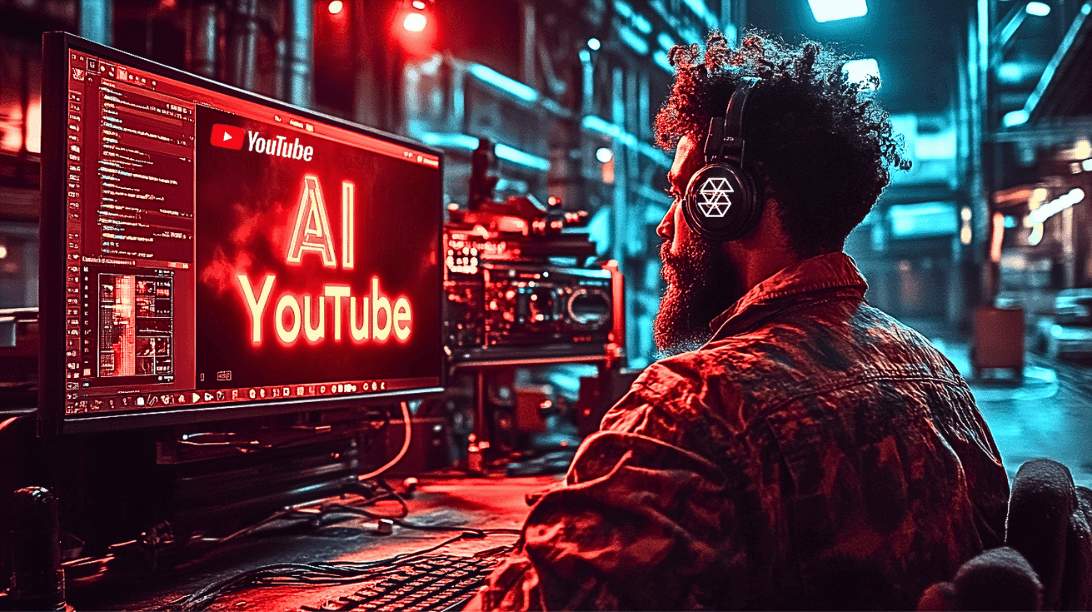10 Things to Know About Adobe’s Firefly AI Models
In a landscape constantly reshaped by technological innovation, Adobe’s Firefly Models emerge as a beacon of creative prowess. These generative AI models are not merely tools, but companions to the imaginative minds, pushing the boundaries of what’s possible in design. As enterprises vie to stay ahead in the digital race, knowledge of such groundbreaking models becomes imperative.
This blog unveils ten facts about Adobe’s Firefly Models, shedding light on their capabilities and how they stand to revolutionize the way we create. Each fact dives into different facets of the Firefly Models, offering a glimpse into the future of Adobe design and content creation.
- 1. Adobe Firefly is a family of creative generative AI models that includes image generation and text effects.
- 2. Firefly’s initial model was trained on Adobe Stock images, openly licensed content, and public domain content where copyright has expired, and is designed to generate content safe for commercial use.
- 3. Firefly’s Image 2 Model significantly advances creator control and image quality.
- 4. Users have generated over 3 billion images with Firefly’s initial model since its beta launch in March, making it the most popular AI image generation model designed for safe commercial use, in record time, globally.
- 5. Firefly’s Design Model, trained on hundreds of thousands of high-quality Adobe Express templates, generates customizable templates for print, social posts, online advertising, video, and more.
- 6. Firefly’s Generative Match technology allows users to include a reference image along with their text prompt, and determine how close the resemblance is between the reference image and the generated image with a simple slider.
- 7. Firefly’s Generative Match technology is available on the Firefly website and Adobe Illustrator.
- 8. Firefly’s new features can help creative people keep up with the tremendous demand for content and make exploring different creative approaches much quicker and easier.
- 9. The Adobe Firefly Vector Model generates editable vector graphics.
- 10. Firefly’s models are trained on licensed content and public domain content for which copyright has expired, and Adobe applies content moderation that filters assets before they become part of the Firefly training dataset.
- Unveiling the Potential of Adobe’s Firefly Models
1. Adobe Firefly is a family of creative generative AI models that includes image generation and text effects.
Delving into the heart of Adobe’s innovation, Adobe Firefly stands as a diverse and impressive contribution from Adobe’s family of generative AI models. It’s not just about crafting visuals; it’s about telling stories through images and text effects. Whether it’s creating captivating graphics or adding flair to textual content, Firefly Models encompass a spectrum of creative possibilities. This family of models is Adobe’s answer to the ever-evolving demands of the digital design realm, offering a suite of tools that resonate with the modern creator’s aspirations.
2. Firefly’s initial model was trained on Adobe Stock images, openly licensed content, and public domain content where copyright has expired, and is designed to generate content safe for commercial use.
The backbone of Firefly’s prowess lies in its training data. By harnessing a rich dataset comprising Adobe Stock images, openly licensed content, and treasures from the public domain whose copyright has lapsed, the initial model of Firefly is meticulously crafted to generate content that’s not just visually appealing but also safe for commercial use. This conscientious approach towards training ensures that the creative outputs are not entangled in legal intricacies, thereby providing a smooth sail for enterprises in their creative journey.
3. Firefly’s Image 2 Model significantly advances creator control and image quality.
The Adobe Firefly Image 2 Model is a testament to Adobe’s commitment to advancing creator control and elevating image quality. Now available in beta on the Firefly web app, this model opens new horizons for creators, enabling them to produce images that not only captivate the eyes but also tell compelling stories. The advancement signifies a leap towards more refined, high-fidelity visual creations, meeting the modern-day demands for superior image quality and creator autonomy.
4. Users have generated over 3 billion images with Firefly’s initial model since its beta launch in March, making it the most popular AI image generation model designed for safe commercial use, in record time, globally.
The staggering figure of over 3 billion images generated since the Firefly beta launch in March 2023 is a resounding endorsement of its capabilities. The global creative community has embraced Adobe Firefly, making it the most popular AI image generation model for safe commercial use in a remarkably short span. This milestone reflects not just the technical prowess of Firefly, but also the trust and value it has garnered among users, setting a solid foundation for its continued evolution and adoption.
5. Firefly’s Design Model, trained on hundreds of thousands of high-quality Adobe Express templates, generates customizable templates for print, social posts, online advertising, video, and more.
Bridging the gap between template design and customization, Firefly’s Design Model is a creative powerhouse. Trained on hundreds of thousands of high-quality Adobe Express templates, it’s engineered to generate a myriad of customizable templates catering to various media platforms. Be it print, social posts, online advertising, or video, the Adobe Firefly Design Model is adept at crafting templates that not only meet the aesthetic standards but also resonate with the brand’s message. This model is a boon for creators striving to maintain a unique brand identity across diverse media channels.
6. Firefly’s Generative Match technology allows users to include a reference image along with their text prompt, and determine how close the resemblance is between the reference image and the generated image with a simple slider.
Introducing a blend of reference imagery and text prompts, Firefly’s Generative Match technology is a leap towards intuitive design. Users can now include a reference image along with their text prompt, navigating the resemblance between the reference and generated image with a simple slider. This feature enhances user control, allowing for a more tailored design output, thus enriching the creative dialogue between the tool and the creator.
7. Firefly’s Generative Match technology is available on the Firefly website and Adobe Illustrator.
Accessibility is key to adoption, and Adobe ensures that with the availability of Generative Match technology on both the Adobe Firefly website and Adobe Illustrator. This accessibility fosters a broader user engagement, opening the doors for a myriad of creators to explore and leverage this innovative technology in their projects. Through this, Adobe not only extends the reach of Firefly’s capabilities but also nurtures a community of creators eager to push the boundaries of design.
8. Firefly’s new features can help creative people keep up with the tremendous demand for content and make exploring different creative approaches much quicker and easier.
In a world hungry for fresh and engaging content, Adobe Firefly comes as a boon. Its array of new features are tailored to help creative minds not only keep up with the tremendous demand for content but also explore different creative avenues with ease and speed. This responsiveness to market demands underscores Firefly’s role as a catalyst in nurturing innovation and meeting the ever-evolving content needs.
9. The Adobe Firefly Vector Model generates editable vector graphics.
Unveiling a new era of vector graphics, the new Firefly Vector Model is a designer’s ally. This model is adept at generating editable vector graphics, providing a seamless blend of precision and creativity. This feature not only accelerates the design process but also empowers designers with the flexibility to tweak and refine graphics to their liking, embodying the essence of personalized design.
10. Firefly’s models are trained on licensed content and public domain content for which copyright has expired, and Adobe applies content moderation that filters assets before they become part of the Firefly training dataset.
Ethics and legality are at the core of Firefly’s training regime. By utilizing licensed and public domain content, and applying rigorous content moderation, Adobe ensures that the assets integrated into the Adobe Firefly training dataset are filtered and compliant. This meticulous approach reflects Adobe’s commitment to promoting ethical AI practices, setting a high standard in the industry.
Unveiling the Potential of Adobe’s Firefly Models
Embarking on the journey through these ten facts, we’ve uncovered the remarkable capabilities and the ethical foundation of Adobe’s Firefly Models. This exploration reveals not just the technical prowess of Firefly, but also its potential to redefine the creative landscape.
As the digital realm continues to evolve, tools like Adobe Firefly are pivotal in empowering creators to innovate and excel. Unleashing a new era of design and content creation, Adobe’s Firefly Models are indeed a beacon of innovation, ready to illuminate the path for creators and enterprises alike.






